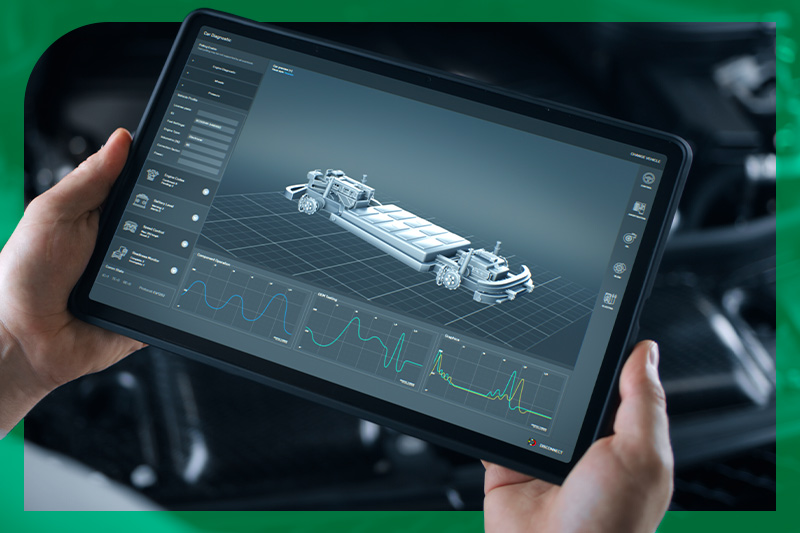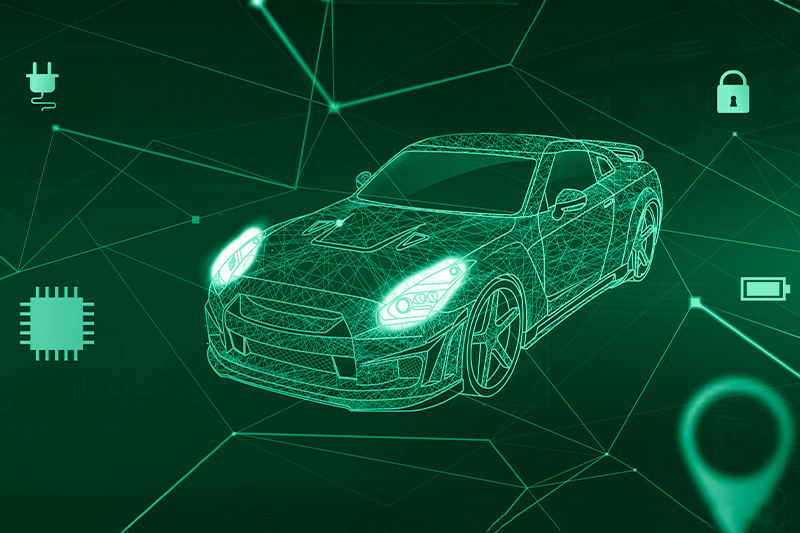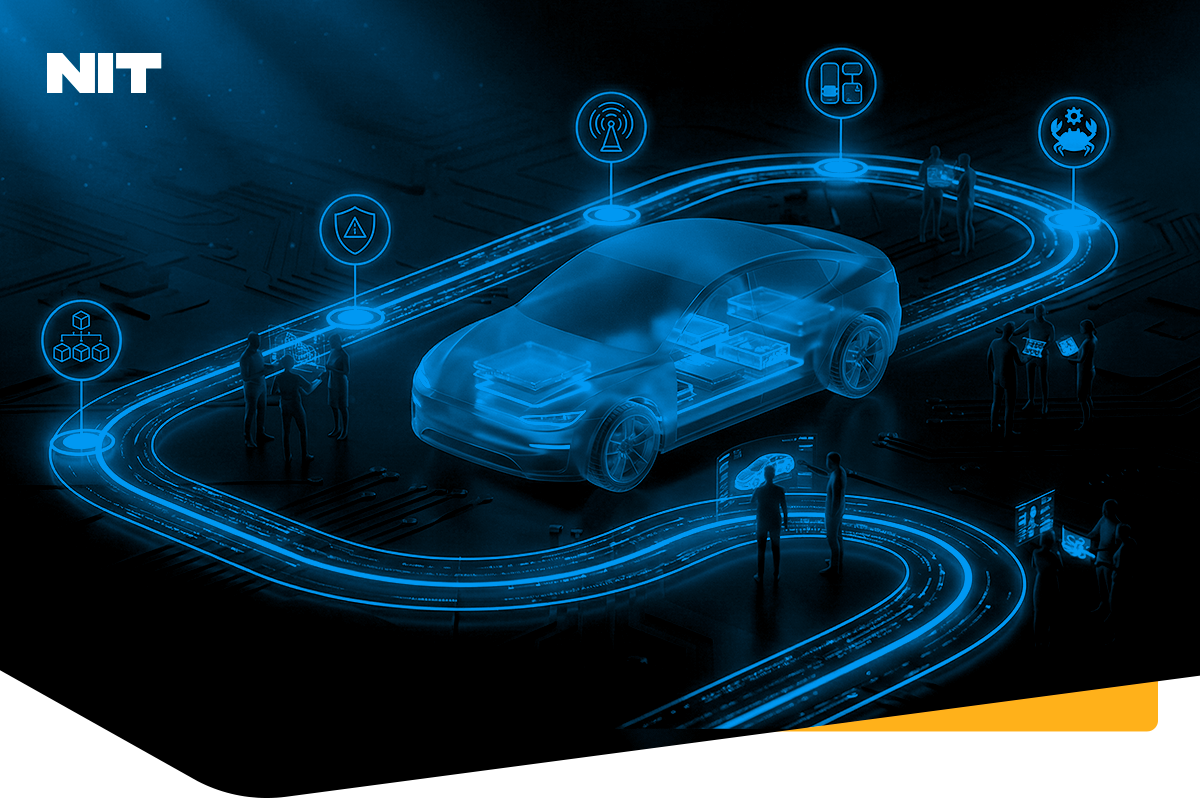
If you ask us in NIT Academy, we can all admit to dreaming about flying, fully autonomous cars. Looking at the current situation in the automotive industry, it seems that we’re closer than ever to fulfill that dream. Well, maybe more slowly than we initially thought, but there have been some pretty significant developments in the car industry that surely give us hope of changing the world with innovations.
Where do those innovations come from, and how do we keep the course towards the next remarkable change?

We discussed this specific subject with our instructor at NIT Academy, Slobodan Račanović, who gave us a more comprehensive understanding of the industry.
As much as “Flying car” sounds like a dream come true, it won’t just magically happen. There is a long road ahead of us, and a lot of room for improvement, education, new testing and development. Big improvements in automotive require teams of experts to join their thoughts and experiences and strive towards the same goal. In order to become (and stay) an expert in this rapidly growing and changing industry, it is of crucial importance that you constantly learn and keep up with new technologies, share experiences from practice and be able to apply new findings into industry and company processes.
For this to happen, there should be a common understanding between leading companies who strive to perfect their product and bring something new to the market and employees from those companies who recognize their role in innovative solutions.
Human factor in shaping the Automotive industry
“One notable shift in the industry is the transition towards less human interaction with vehicles and more reliance on machines and computer systems. As vehicles become increasingly connected and autonomous, the focus shifts from human-to-car interactions to computer-to-car interactions” said Slobodan. This is where the company’s management must recognize the importance of navigating through transformation, which requires proper in-depth preparation.
As our instructor explained, if you want to understand the vehicle as a whole system, you have to learn how the parts communicate with each other. Every part of the car has its own dedicated protocol, and by gaining knowledge of the protocols, you’ll better understand the car. That is basically the first thing participants learn in the Automotive Control Software Testing course.
Our main focus in automotive software testing is on principles - how to establish proper testing, which system to use during testing processes, and how to follow test protocols. With all those steps, we’re ensuring to find bugs in the shortest period of time. One of the main benefits of ECU testing is its ability to reduce time-to-market and identify significant issues in ECU development. The process adheres to standard procedures and industry protocols, ensuring the highest level of quality and performance in the automotive industry.
“What sets it apart is that this course is based on industry experience and its not fully theoretical training. It is designed to give participants a theoretical base in the automotive field and practical knowledge altogether” - said Slobodan Račanović. During the training participants get familiarized with some automotive standards like ISO26262 and each time when it's necessary the instructor will reference training for that standard
If you were wondering whether some prior knowledge is necessary for NIT Academy courses in Automotive testing, well, the answer is YES. We don’t expect trainees to already know everything on an expert level, but it’s required to have some background in basic engineering, and programming and to have automotive experience on some level. This course is suitable for a broad range of participants, including university students, professionals at junior and intermediate levels in diverse industries, seasoned engineers seeking to deepen their expertise, and individuals interested in learning about testing and automotive protocols.

The Practical Aspect: Vehicle Networks and Infrastructure
In the practical segment of the course, Vehicle Networks and Infrastructure (VNI), participants get practical experience exploring widely-used protocols like automotive Ethernet, CAN, CAN FD, LIN, and FlexRay. As Slobodan said “The main goal is to provide participants not just with theoretical knowledge but also the technical skills needed to understand the complex communication systems among different vehicle components. This approach helps them gain a thorough understanding of the intricate dynamics within vehicles. “
The course follows a highly modular structure, ensuring a systematic and comprehensive learning experience. It kicks off by guiding you through the creation of a database for Controller Area Network (CAN), providing a solid foundation. Once you've mastered this foundation, the focus shifts to a deeper exploration of CAN protocols, enriching your understanding of this integral automotive communication system.
Moving seamlessly to the next protocol, Local Interconnect Network (LIN), the course offers hands-on experience. You don't just learn about LIN in isolation; you engage in a practical project that combines your newfound knowledge of both CAN and LIN, reinforcing your ability to apply these protocols in one project.
Next would be the technical background of FLEXray, with a dedicated segment on utilizing fibex. This section equips you with the skills needed to navigate FLEXray effectively. Practical application is emphasized through examples in CANoe, ensuring a holistic understanding of the theoretical concepts.
Bringing the course to its final lap, the spotlight shifts to automotive Ethernet and Ethernet in general. Here, you delve into the creation of ARXMLs and the design of an automotive network using Vector CANoe. This final section not only completes your understanding but also places you at the forefront of cutting-edge automotive communication technologies.
The final part of the training even includes automation of testing processes in Python programming, a valuable skill in today's automotive industry.

In conclusion, the automotive industry is evolving rapidly, and staying ahead requires a commitment to continuous learning and a deep understanding of key protocols and technologies. It is extremely important for companies and individuals in this industry to embrace the future of automotive engineering and ECU testing to ensure that they remain relevant in the ever-changing world of automobiles.
That is precisely why NIT Academy recognized the opportunity to link theoretical and practical knowledge for all those eager to gain the latest insights and experience from automotive industry experts.
Discover the full spectrum of Automotive courses offered by NIT Academy; navigate to this link to explore and make informed choices about your educational journey!



